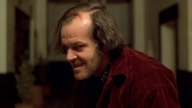Come fare un film: quando si rompe la regola dei 180 gradi. Nel video saggio vediamo due classici esempi

Come fare un film: quando si rompe la regola dei 180 gradi. Nel video saggio vediamo due classici esempi. Si tratta del solito Stanley Kubrick, che è stato uno dei cineasti più rivoluzionari nella storia del cinema. In questo caso il video prende in considerazione una scena tratta da Shining che per comodità è indicata come Jack e Grady. In questa scena Kubrick colloca in posizione diverse i due personaggi i quali finiscono per occupare posizioni ribaltate sullo stesso asse.
L'obiettivo di Kubrick è quello di disorientare lo spettatore, informarlo che non deve credere più di tanto ai suoi occhi. Per di più, a livello narrativo, l'incontro tra Jack e i fantasmi dell'Overlook Hotel è ancora più singolare, per un epilogo ancora più misterioso, in cui vediamo lo stesso Jack in una vecchia foto dell'hotel. Chi sono allora questi personaggi? Ma l'importante, dal punto di vista registico, è che per trasmettere emozioni occorre una scelta valida per comunicare delle sensazioni anche soltando spostando i personaggi nello spazio.
L'altro caso è quello di Requiem for a Dream di Darren Aronofsky in cui la rottura dell'asse dei 180 gradi è abbastanza plateale. Si può anche interpretare come un virtuosismo, ma in questo caso si tratta di un virtuosismo ben dosato nella scena, tanto da incrementare l'interesse dello spettatore, rendendo una sequenza banale del tutto originale con questa scelta registica.
Nel video di Fandor troviamo anche una breve ma efficace spiegazione di cos'è la regola dei 180° e di come alcuni cineasti l'hanno infranta. Tra i citati anche Von Trier.
How to make a movie: when it breaks the 180 degree rule. In the video essay we see two classic examples. This is usually Stanley Kubrick, who was one of the most revolutionary filmmakers in movie history. In this case, the video takes into consideration a scene from Shining which for convenience is referred to as Jack and Grady. In this scene, Kubrick places the two characters in a different position, which end up occupying tilted positions on the same axis.
Kubrick's goal is to disorient the viewer, informing him that he does not have to believe more in his eyes. Moreover, at the narrative level, the encounter between Jack and the ghosts of the Overlook Hotel is even more singular, for an even more mysterious epilogue, where we see Jack himself in an old picture of the hotel. Who are these characters then? But the important thing, from the point of view, is that for emotions to be transmitted it is necessary to have a valid choice to communicate sensations by solving the characters in space.
The other case is that of Requiem for a Dream by Darren Aronofsky in which the 180 degree axis break is quite plain. It can also be interpreted as a virtuosity, but in this case it is a well-dosed virtuosity in the scene, so as to increase the interest of the spectator, making a trivial sequence entirely original with this chronicle.
In Fandor's video we also find a brief but effective explanation of what the 180 ° rule and how some filmmakers have broken it. Among the quotes are also Von Trier.
Categorie generali:
Altri articoli che possono interessarti
Per condividere o scaricare questo video: TV Animalista




























Facebook Comments Box